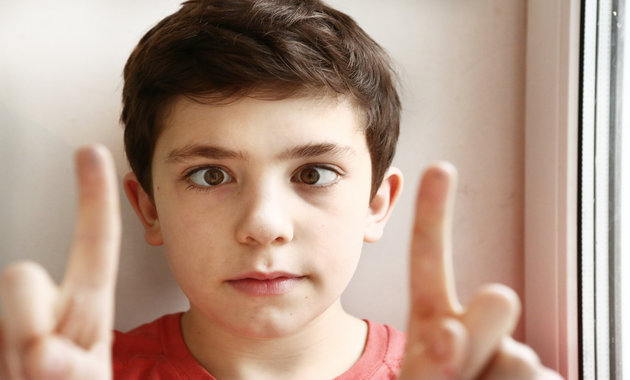
Squint is a misalignment of the two eyes so that both the eyes are not looking in the same direction. This misalignment may be constant, being present throughout the day or it may appear sometimes and the rest of the time the eyes may be well aligned.
What are the symptoms of squint?
Normally newborn babies are cross-eyed. But if the symptoms persist after three months of age, then it is a cause to worry. Be concerned if your child looks at you with one eye closed or with head turned to one side. These may be the symptoms that he/she is having double vision.
What causes squint?
Eye muscles control eye movements. If one muscle is stronger, the eye turns towards the stronger muscle.
Squint may run in families. Muscle or nerve problems due to debilitating diseases like measles or chicken pox.
Children may be long sighted and the effect of focusing leads to the squint. Down syndrome kids mostly have a squint. Very occasionally a child will develop a squint because an eye has defective sight. The earlier this is detected the sooner treatment can be started.
What are the health implications?
If the child squints with one eye, the vision in that eye will become lazy as the brain ignores information from the deviating eye. Improvement in the lazy eye can take place until eight years of age. The child will lose binocular vision (ability to use the two eyes together) if squint is not treated with in time. Squint is detrimental to the appearance of the child too.
What are the treatment options?
Treatment of squint should be as early as possible. Children never outgrow squint. It should be corrected as early as possible. Some of the most common ways that squint can be treated include:
Glasses
In some cases, it is noticed that when a child wears his glasses, the squint becomes less noticeable or disappears completely. This type of squint is known as an accommodative squint. When your child takes their glasses off you will notice that their squint can be seen again. This means that the glasses need to be worn to correct the squint. Many children may only need to wear glasses to treat their squint.
Occlusion therapy (patching)
This is done to improve the vision in the affected eye (lazy eye). You may be asked to cover your child’s good eye with a patch. Your child then uses their weaker eye to see and it helps to build up the pathway between this eye and the brain. If your child wears glasses, patching should always take place when glasses are worn. Some children with a slightly lazy eye do not need patching as the weaker eye may improve with glasses alone.
Eye exercises
In some cases, exercises can be useful to strengthen the ability of the eyes to work together. This type of treatment is usually helpful in older children and is commonly used together with glasses and/or surgery.
Surgery
A number of children may require an operation on the eye muscles in order to straighten the squint. Squint surgery is usually performed under general anaesthetic which means your child will be asleep (unconscious) and unable to feel any pain. Normally the operation is a day case procedure which means your child may not have to stay in the hospital overnight. The operation usually weakens or strengthens the muscles of the eye so that the eyes are better aligned. Surgery won’t improve the level of vision in a lazy eye and for most children, glasses may still need to be worn after the surgery.
Injections
Some children may be offered treatment with a Botulinum Toxin (Botox) injection. It is only considered for certain types of squint, it can be carried out together with squint surgery or on its’ own. The effect is temporary but may be effective.
Remember, the eye specialist is the best judge and will advise you the correct treatment. The earlier the treatment, the better is the results.